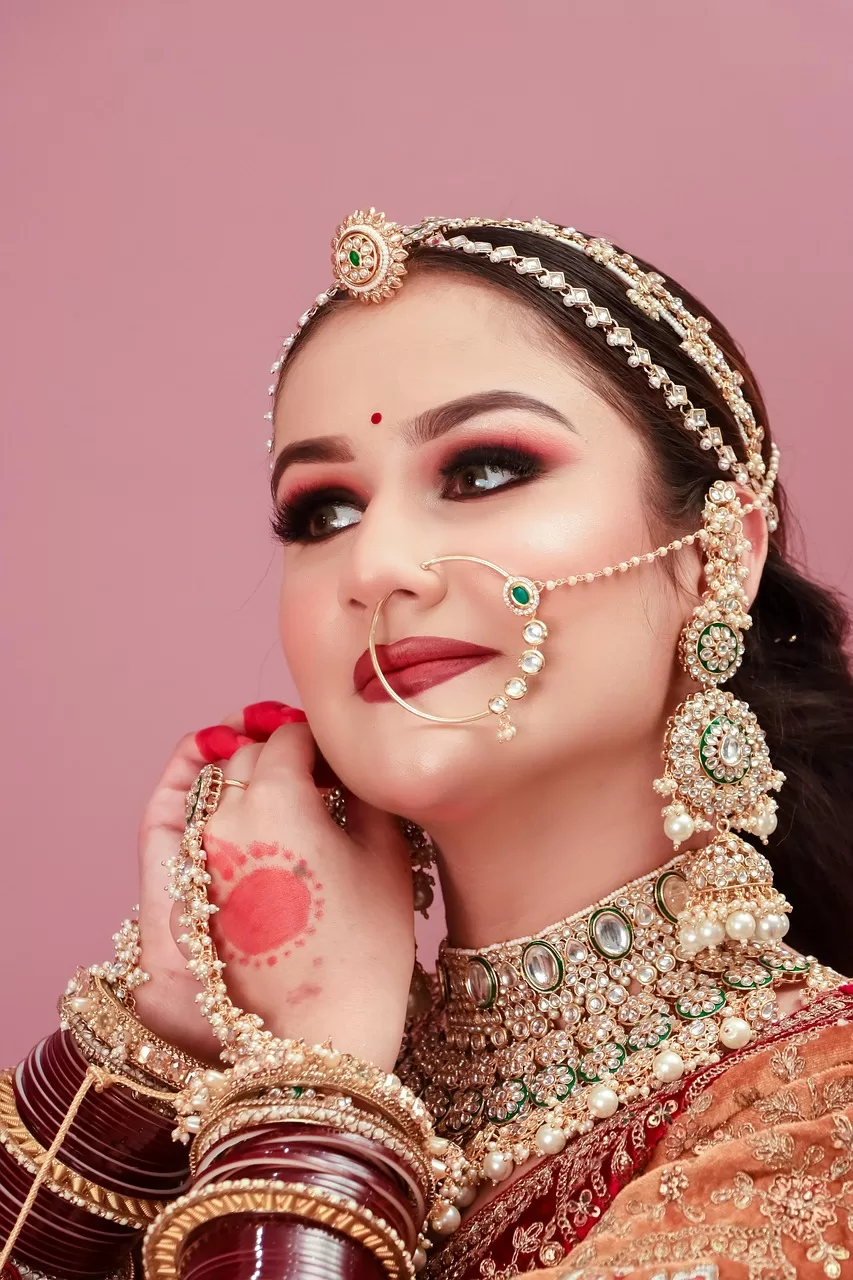Subtotal ₹0.00

As Navratri is celebrated around the corner, we must know about the adornment of Maa Durga and her various forms. I, personally want to explain people about the type of Shringars (adornment) Maa does. Although all women carry that energy, so this is true about every woman too. The adornments are not only about beautiful appearance but also have some ayurvedic benefits.
During Navratri, by worshipping the nine forms of Goddess, women often celebrate their own feminine energy through solah shringar. At many places, especially in Bengal, women play Sindoor (vermilion) Holi. It is part of the tradition to embrace the femininity of ones.
This ritual of wearing sixteen adornment has been practiced since ancient times. The story behind the Solah Shringar features Rati, the wife of Kamdev, the god of love. Rati engaged in severe penance to appease Goddess Lakshmi. She was then blessed with the 16 adornments from Lakshmi and wore them to impress and marry Kamdev.
There are Solah Shringars explained in Indian vedic texts for women. Every Devi wears them on their wedding day. They are not just ornaments, but tools to balance body, mind, and aura. Let’s go in detail to know the benefits of each one:
Bangles
Bangles made of silver, gold, lac, ivory or studded with gemstones are symbolic of prosperity, good fortune and health. These bangles stimulate acupressure points for blood circulation.
Anklet
In Ayurveda, wearing metallic anklets, especially silver, improves blood circulation, reduces leg pain and balance energy. Plus, it creates a rhythmic sound, calming the mind and nervous system.
Kumkum and Bindi
The Kumkum or Bindi is applied between brows. This point is known as Ajna Chakra (third eye point). This application improves focus, calms thoughts, boosts intuition and protects from stress.
Ittars and flowers
The perfume is considered one of the sixteen adornments. But, this is not about today’s perfumes and scents that are made by cosmetics industries. In ancient India, women used to have beautiful scents made with fragrance flowers. These are also known as Ittar in Hindi. These scents are natural fragrance that uplift the mood, clears the aura. Further, flowers fragrance work as aromatherapy that raises your frequency and give a positive vibe.
Nose ring or Nath
Nose rings not only look beautiful but also do have some meaningful benefits. Wearing ornaments in nose is connected to reproductive health, plus, it also works as breath regulation. Other benefits of wearing nose ring is to have balanced menstrual cycle in the woman body.
Sindoor or vermillion
Sindoor is a red powder that women apply in the centre of head after getting married. The points where it is applied is known as ‘crown chakra’. This powder is made from the seeds of the Anato tree, which are dried and crushed into a vibrant red powder. It is usually considered mandatory for married women and is connected with husband’s longevity. But there are ayurvedic benefits of applying sindoor. It boosts vital energy, prana flow and mental focus.
Aalta or Mehandi
Aalta is a kind of red liquid that is extracted from natural sources. This is one of the adornments, that is applied on both palms and soles. This keeps body cool and beautiful.
Kohl or Kajal
Kajal is an ancient practice that is mentioned in ayurvedic texts. It is originally made of burning cotton with pure ghee in a pot. When applied to eyes, it dispels negative energies, plus, clears the vision and get rid of vulnerability.
Other eight adornments that is included in the 16 ornaments are:
Bajuband (Armlet)
toe ring
kamarband or belly chain
Hair cosmetics
Gajra
Earrings or Karnphool
Necklaces
Aarsi or Thumb ring (often with a mirror).











